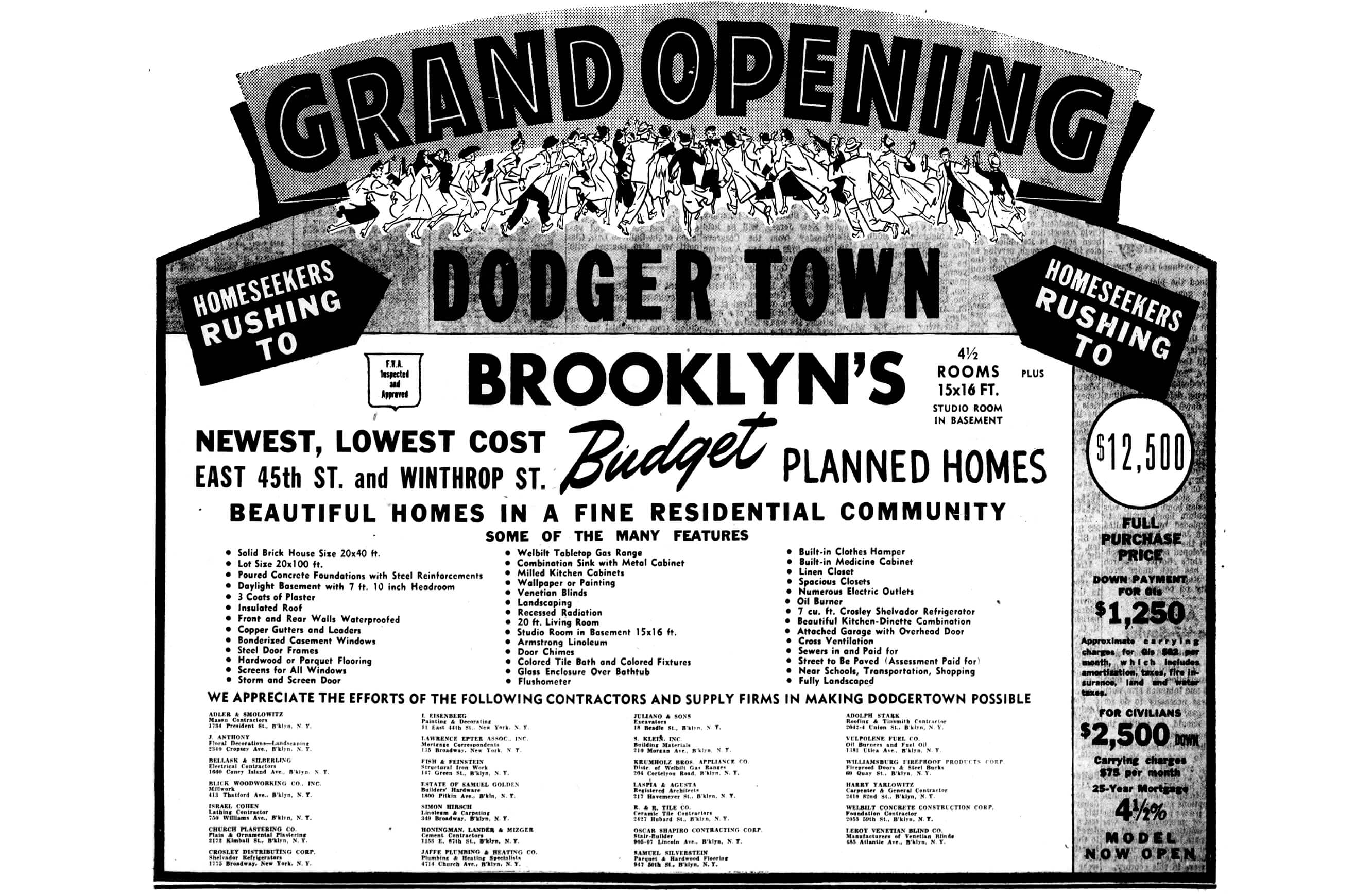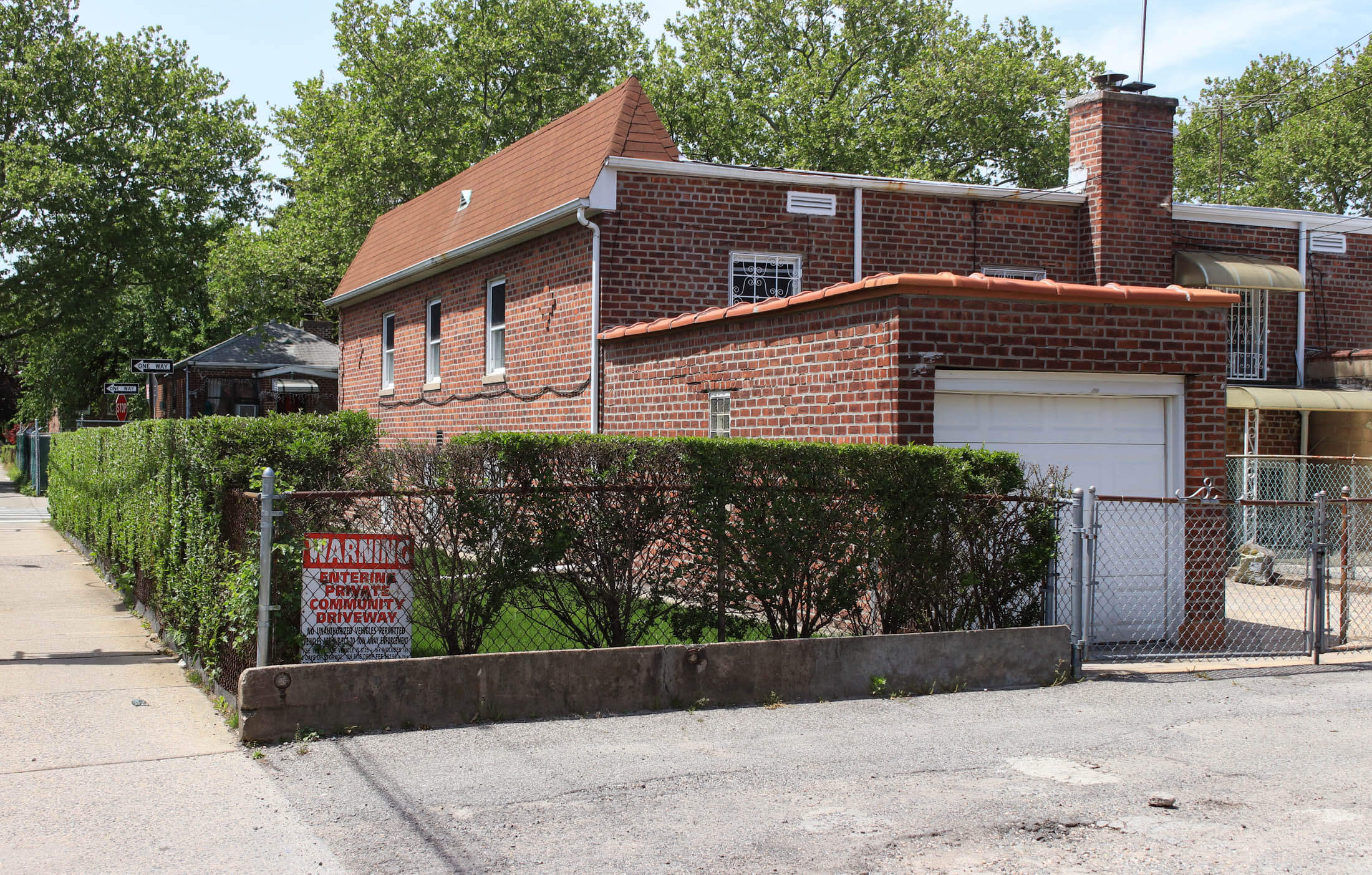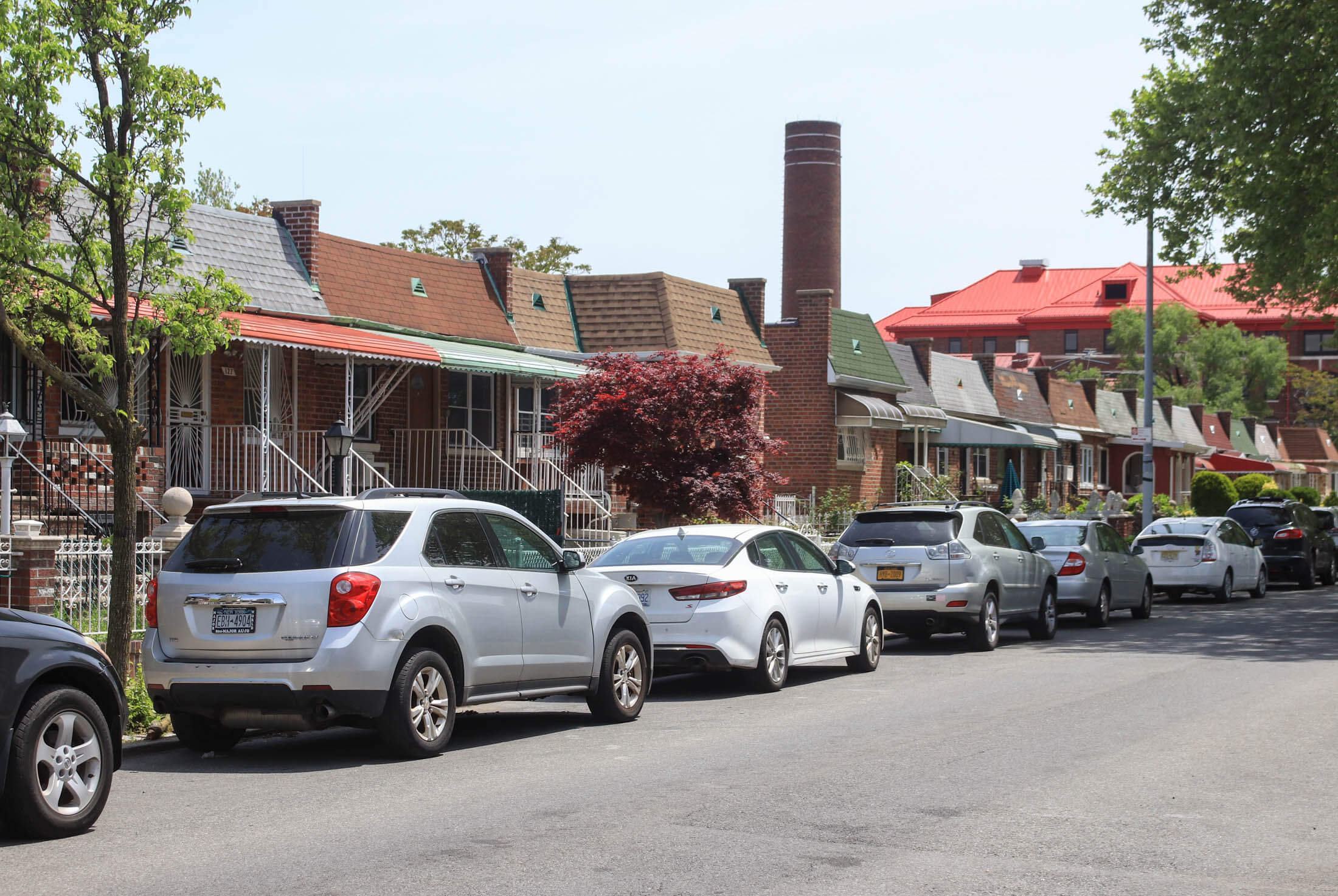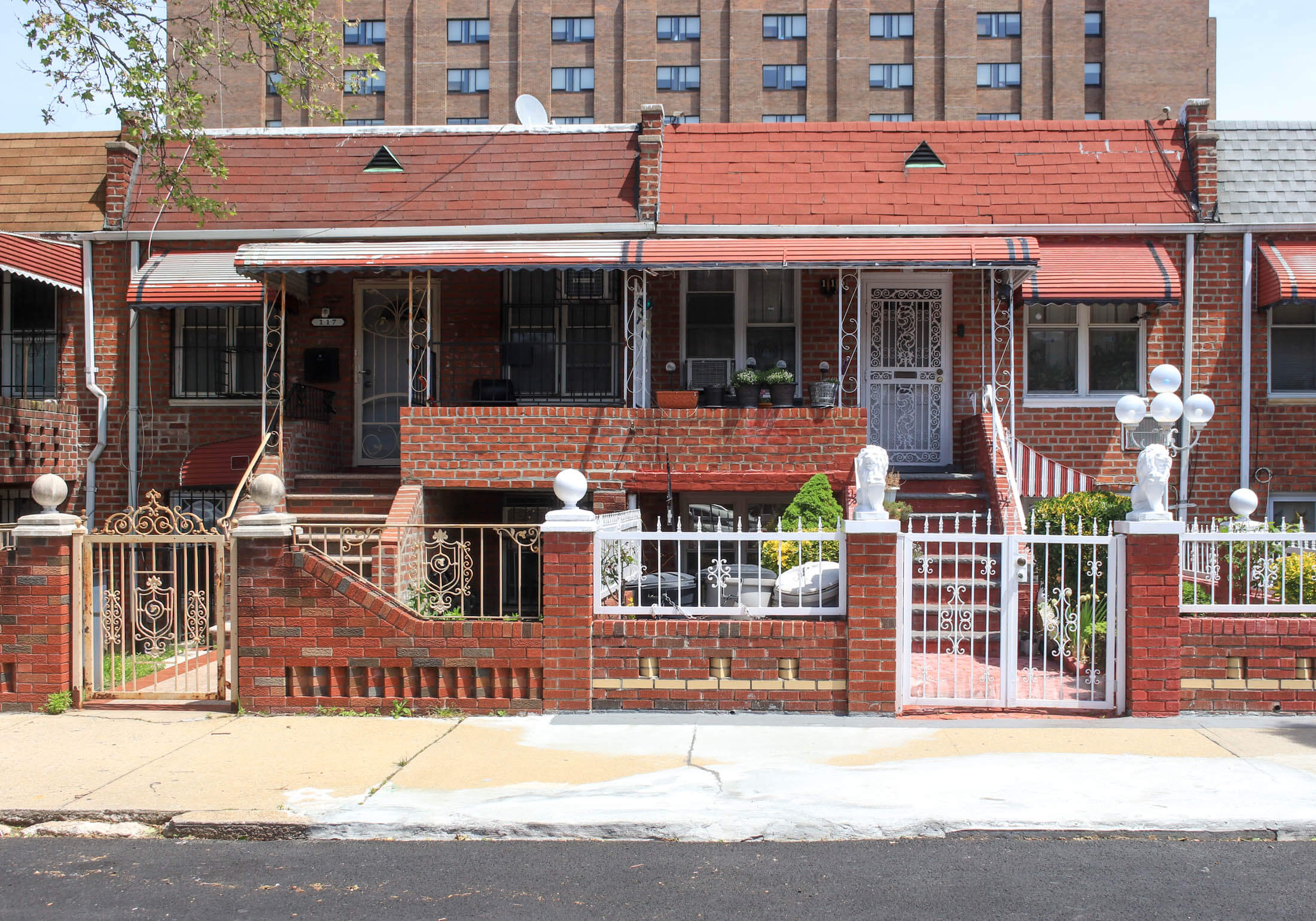Budget-Minded Rows Marketed as Dodgertown Eased the Postwar Housing Crunch in East Flatbush
These petite East Flatbush houses won’t grab the eye for any architectural extravagance, but the builder came up with an interesting marketing hook and a budget solution to the housing crunch in Brooklyn after World War II.

These petite East Flatbush houses won’t grab the eye for any architectural extravagance, but the builder came up with an interesting marketing hook and a budget solution to the housing crunch in Brooklyn after World War II.
The name has dropped out of use, but the rows of brick houses on East 45th and East 46th streets between Winthrop Street and Rutland Road were once known as Dodgertown.

Developed by builder Milton Steinberg, Dodgertown (spelled Dodger Town in the earliest ads) was officially launched in September of 1949 with a first batch of homes that would eventually grow to a micro nabe of more than 150 one and two-family houses. It was just one of the postwar developments by Steinberg, who was busy building in Queens and Long Island as well as at another Brooklyn development, Atlantic Homes in Bath Beach.
At Dodgertown, families with limited incomes were promised a roomy house on a budget and a fairly lengthy list of amenities in a giant ad placed to promote the new development in September of 1949. Houses were built on poured concrete foundations, had insulated roofs, screens in all windows and “daylight” basements. On the interior there were built-in hampers, hardwood or parquet floors, venetian blinds and kitchens with dinettes. Driveways behind the houses provided access to attached garages.


The houses were FHA inspected and approved, according to the ads, and veterans were able to put a $1,250 down payment for a $12,000 house compared to the $2,500 for civilians for some of the first houses offered in 1949. Despite the ads touting easy financing and low prices, the houses likely wouldn’t have been an accessible housing option for all. The recently released 1950 census records show the earliest residents all identified as white. Occupations included factory workers, taxi drivers, plumbers, mail carriers and nurses. That same year a baby girl was celebrated as the first arrival of the new community; another opportunity for a bit of press by the developer.
Built in at least six sections between 1949 and 1954, different brick models were introduced, although all remained relatively simple in exterior detailing, while the number of rooms and amenities on the interior varied. In 1950, the new two-story models came complete with steel and concrete bomb shelters in the basement that were large enough to hold a group of 16.

The Dodgertown name made for a nice marketing ploy but the development wasn’t exactly in the shadow of the Dodgers’ home at Ebbets Field, located more than a mile to the west, but perhaps that offered a more attention-grabbing name than nodding to a closer neighbor, the Kings County Hospital. The Dodgertown name doesn’t seem to have stuck much past the 1950s. Certainly the departure of the team hastened the death of the neighborhood moniker.
[Photos by Susan De Vries]
Related Stories
- Streamline Moderne Firestone Building May Be Razed for Housing in Crown Heights
- A Former Bed Stuy Burlesque House to Take Its Last Bow
- Ask Brownstoner: How Can I Find Out More About the Houses on My Crown Heights Block?
Email tips@brownstoner.com with further comments, questions or tips. Follow Brownstoner on Twitter and Instagram, and like us on Facebook.





What's Your Take? Leave a Comment